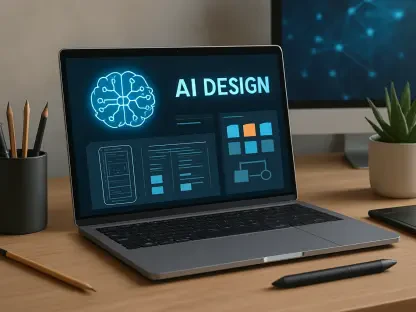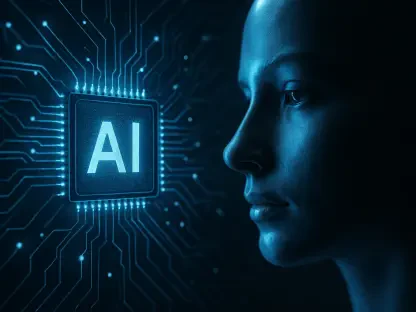Introduction and Context for the Review
Imagine a world where software development races against escalating cyber threats, with breaches costing organizations billions annually and exposing critical vulnerabilities in real time, underscoring the urgent need for robust security integration within development pipelines. This challenge is precisely what artificial intelligence (AI) in DevSecOps seeks to address. This review examines the transformative role of AI in the DevSecOps framework, a methodology that embeds security practices throughout the software lifecycle. It aims to dissect how AI enhances automation, bolsters threat detection, and reshapes secure software delivery while exploring its potential to tackle persistent cybersecurity hurdles.
The scope of this analysis spans the evolution of AI within DevSecOps, focusing on its key functionalities and real-world impact. By delving into current capabilities and emerging trends, this review offers a comprehensive perspective on how this technology integration is redefining collaboration among development, security, and operations teams. The goal is to illuminate AI’s contributions to efficiency and security, alongside the challenges that temper its adoption in this critical domain.
Understanding AI in DevSecOps
DevSecOps represents a paradigm shift by weaving security into every phase of software development, moving away from treating it as an afterthought. Central to this approach is the “shift left” philosophy, which prioritizes early security interventions to catch issues before they escalate. AI amplifies this methodology by introducing advanced automation and predictive insights, enabling teams to address vulnerabilities with unprecedented speed and precision in an era of rapid deployment cycles.
The integration of AI into DevSecOps aligns with the broader technological push for faster, more secure software releases amidst rising cyber risks. By leveraging machine learning and data analytics, AI tools streamline processes that traditionally slow down development timelines, such as manual code reviews and compliance checks. This synergy not only enhances operational efficiency but also fortifies defenses against sophisticated threats that exploit modern, complex infrastructures.
As digital transformation accelerates, the relevance of AI in DevSecOps becomes even more pronounced. Organizations face mounting pressure to deliver applications swiftly without compromising on safety, a balance that AI helps achieve through intelligent automation. This section sets the stage for a deeper exploration of how these capabilities manifest in specific features and real-world scenarios, driving a new era of secure development practices.
Core Features and Capabilities of AI in DevSecOps
Automation of Security Tasks
One of the standout benefits of AI in DevSecOps lies in its ability to automate repetitive, labor-intensive security tasks that often slow down development. Processes like vulnerability scanning, static code analysis, and compliance auditing, which once required significant manual input, are now executed with remarkable efficiency. AI-driven tools can scan thousands of lines of code in minutes, identifying potential flaws that might otherwise slip through human oversight.
This automation translates into substantial time savings and a reduction in human error, allowing teams to focus on strategic priorities rather than mundane chores. For instance, AI can prioritize critical vulnerabilities based on severity and context, ensuring that developers address the most pressing risks first. Such precision accelerates the development pipeline while maintaining a high security standard, a crucial advantage in competitive markets.
Moreover, the accuracy of AI in these tasks continues to improve as algorithms learn from vast datasets of past scans and security incidents. This iterative learning process minimizes false positives, a common frustration in traditional scanning tools, thereby enhancing trust in automated systems. The result is a seamless integration of security into daily workflows, aligning with DevSecOps’ core mission of continuous protection.
Real-Time Threat Detection with Machine Learning
Machine learning (ML), a pivotal subset of AI, empowers DevSecOps with real-time threat detection capabilities that outpace conventional methods. By analyzing patterns and anomalies in data across development environments, ML algorithms can identify potential threats—such as unauthorized access or unusual code behavior—before they manifest into full-blown breaches. This proactive stance is vital in preventing issues from reaching production stages.
The technical foundation of ML-driven detection lies in its ability to process massive volumes of data from logs, network traffic, and user activities, correlating these inputs to spot deviations. For example, an ML model might flag a sudden spike in API calls as a possible indicator of a distributed denial-of-service (DDoS) attempt, prompting immediate investigation. Such responsiveness is a game-changer in environments where threats evolve rapidly.
Practical implementations of this technology are already visible in tools that integrate with continuous integration/continuous deployment (CI/CD) pipelines, offering live monitoring and alerts. These systems not only detect but also suggest remediation steps, reducing the cognitive load on security teams. This capability underscores AI’s role as a dynamic shield, continuously adapting to new attack vectors in the DevSecOps ecosystem.
Emerging Trends in AI-Driven DevSecOps
The adoption of AI within DevSecOps is gaining momentum across diverse sectors, reflecting a broader trend toward security-first development cultures. Industries ranging from finance to healthcare, alongside government bodies, are embracing this approach to safeguard cloud-native applications and modernize aging systems. AI’s role in automating complex security protocols is becoming a cornerstone of these transformations, enabling scalability in high-stakes environments.
A significant trend is the focus on securing software supply chains, a growing target for cyberattacks due to their interconnected nature. AI tools are increasingly deployed to monitor dependencies and third-party components, flagging risks that could compromise entire ecosystems. This proactive monitoring is especially critical as organizations rely on open-source libraries and external vendors, where vulnerabilities can cascade through multiple layers.
Additionally, the push toward cloud security is shaping AI’s evolution in DevSecOps, with tools designed to protect infrastructure-as-code setups on platforms like AWS and Azure. These solutions leverage AI to predict misconfigurations and enforce compliance in dynamic cloud environments. As this trend unfolds, the convergence of AI and DevSecOps is poised to redefine how organizations balance innovation with robust cybersecurity over the coming years.
Real-World Applications of AI in DevSecOps
Across various sectors, AI is proving its mettle in enhancing DevSecOps practices with tangible outcomes. Companies like Wipro and Telefónica UK have integrated AI-driven tools into their CI/CD pipelines, automating security checks to ensure rapid yet safe software releases. These implementations highlight how AI can streamline workflows without sacrificing the integrity of critical systems.
Government entities, such as the U.S. Department of Defense, are also leveraging AI within DevSecOps to fortify national security applications. By employing continuous risk assessments and protecting infrastructure-as-code on major cloud platforms, these organizations mitigate threats in highly sensitive contexts. Tools like Darktrace PREVENT play a pivotal role by offering predictive insights into potential vulnerabilities before exploitation occurs.
Unique use cases further illustrate AI’s versatility, such as Microsoft Security Copilot aiding in threat intelligence analysis across development environments. These real-world examples demonstrate how AI not only automates routine tasks but also empowers teams to anticipate and neutralize sophisticated attacks. Such applications underscore the technology’s capacity to adapt to diverse operational needs, reinforcing security at every stage of the software lifecycle.
Challenges and Limitations of AI in DevSecOps
Despite its promise, integrating AI into DevSecOps is not without significant hurdles that temper its widespread adoption. Technical challenges, such as AI’s occasional missteps in edge cases, can lead to false positives or overlooked threats, undermining confidence in automated systems. These errors often stem from incomplete training data or scenarios that deviate from learned patterns, exposing gaps in current capabilities.
Organizational barriers also pose substantial obstacles, with many teams lacking a deep understanding of AI’s role in DevSecOps or facing resistance from leadership due to unclear returns on investment. This disconnect can stall initiatives, as stakeholders hesitate to allocate resources to unproven technologies. Bridging this knowledge gap requires targeted education and demonstrable proof of AI’s value in enhancing security outcomes.
Furthermore, the risk of over-reliance on automation looms large, potentially sidelining human judgment in critical decision-making. While AI excels at processing data, it lacks the nuanced intuition of experienced professionals, necessitating a balanced approach. Ongoing efforts to integrate human oversight with AI’s speed aim to address these limitations, ensuring that automation complements rather than replaces strategic thinking in securing development pipelines.
Future Outlook for AI in DevSecOps
Looking ahead, the trajectory of AI in DevSecOps points toward significant advancements that could further revolutionize secure software delivery. Innovations in AI algorithms are expected to enhance precision in threat prediction and vulnerability assessment, minimizing errors even in complex, outlier scenarios. Such progress would bolster confidence in automated systems across diverse industries.
Broader adoption is also anticipated, as more organizations recognize AI’s potential to streamline development while fortifying defenses. From small enterprises to global corporations, the scalability of AI-driven DevSecOps tools could democratize access to cutting-edge security practices. This trend may be particularly impactful in sectors with stringent regulatory demands, where compliance automation offers a competitive edge.
Long-term, the impact of AI on DevSecOps could redefine how pipelines operate, embedding security so seamlessly that it becomes an invisible yet integral component of development. Predictions suggest that over the span from now to 2027, AI might evolve to preemptively design secure architectures, addressing current shortcomings like over-reliance risks. This vision promises a future where speed and safety are no longer at odds but are mutually reinforcing.
Conclusion and Key Takeaways
Reflecting on this exploration, it becomes clear that AI holds a transformative role in DevSecOps by automating critical security tasks and enhancing real-time threat detection. Its ability to reduce manual workloads and accelerate response times marks a significant leap forward for development pipelines. Yet, the journey reveals persistent challenges, from technical inaccuracies to organizational hesitance, that temper its immediate impact.
Moving forward, a practical step is to invest in hybrid models that pair AI’s efficiency with human expertise, ensuring a safeguard against automation pitfalls. Organizations also need to prioritize training initiatives to demystify AI’s application in DevSecOps, fostering buy-in at all levels. These actions promise to unlock AI’s full potential, paving the way for a more secure and agile software landscape.









